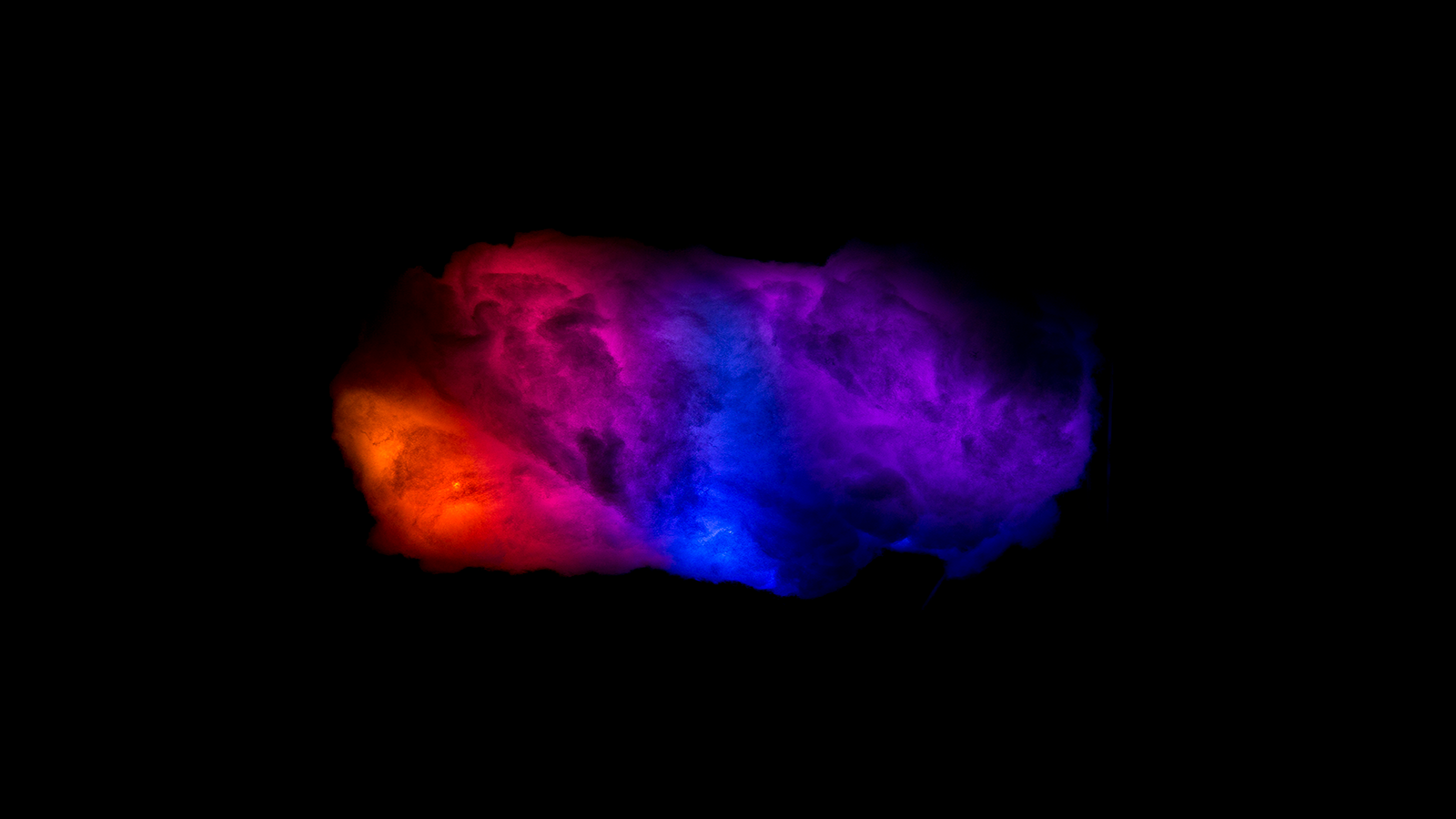
Pixel Cloud
Winter 2018 - Interaction Design / Physical Computing
Team: Carlo Dormiendo, Christina Weng, Wesley Slade
Role: 3D Design / Physical Computing / Technical Research
Project Overview
The Pixel Cloud is a generative art installation with the goal of enabling personal and group expression through generative lighting. Up to three people can simultaneously interact with the cloud each affecting the cloud's colouration and lighting patterns in a unique way.
Artist's Statement
As technology advances, we are continuously given exponentially powerful devices that allow us to create and share those creations, but they often isolate us in our physical environments. By isolating ourselves in these solitary environments, we strip ourselves of one of our greatest allies in the act of creation: Collaboration.
We believe collaboration is one of the best ways to create a work that is more than just the sum of its parts. What if the simple act of flipping a light switch could be something more?
Create a light installation that encourages users to collaborate to create generative lighting
Research: Examining Trends In Experiential Installations
Visual / Auditory Inspiration
Projects like 21 Balançoires (21 Swings) in Montreal, Quebec provided a source of inspiration for the type of joy and delight we wanted people to get out of our own installation. They had done with with sound, what we wanted to do with light.
A installation called Love Lights was also looked at for the kind of collaborative, light based activity we wanted to create (albeit on a smaller scale and different theme)
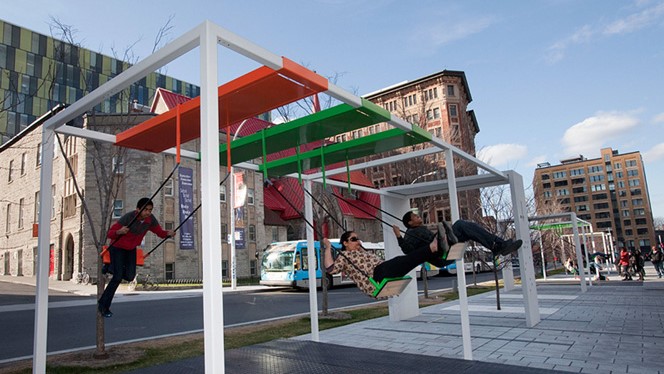
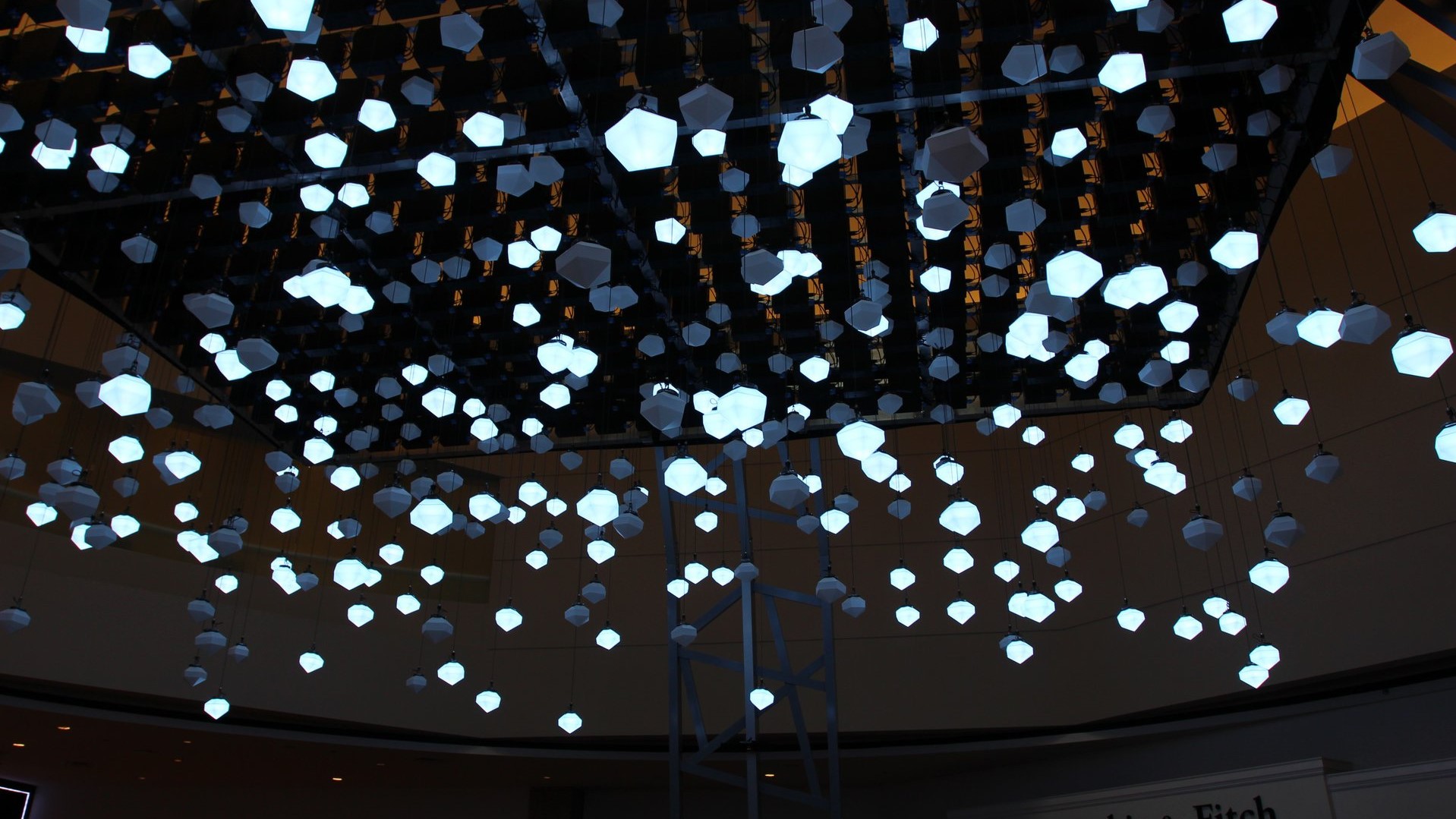
Form Exploration / Concepts
We experimented with materials and sketching out concepts on paper. Our goal during this exploration was to find a visually dynamic form and find an method of interaction that would encourage collaboration between users.
A generative tabletop installation that illuminates different surface areas as determined by multi-user touch and coordination.
A competitive game where users conquer the lighting of an undefined form to eventually “win” by capturing territory, represented by areas lit across the form's surface.
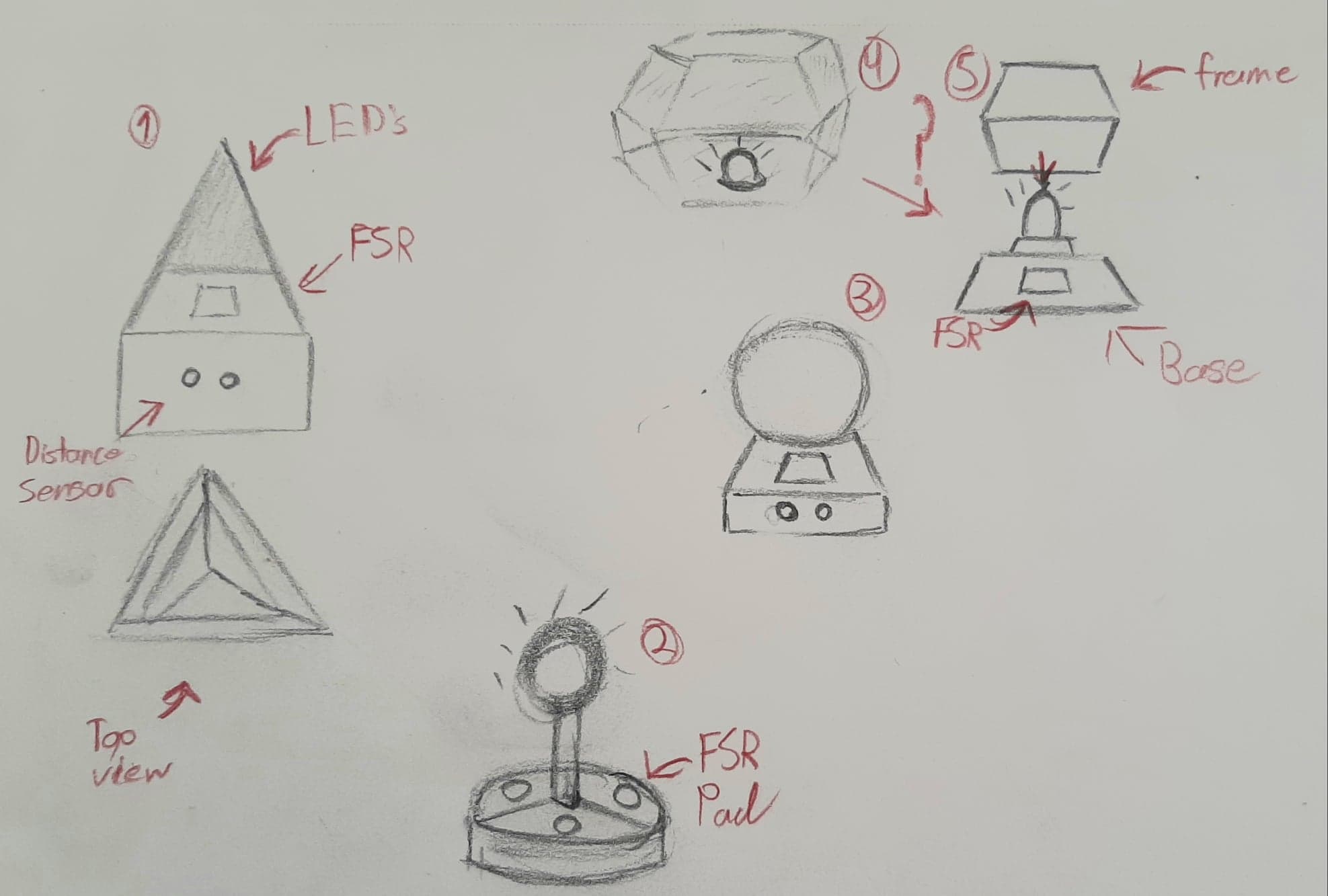
Neither of these concepts embodied the entire experience we wanted to create. With the first concept being too visually flat and the latter experience being competitive instead of cooperative.
Tech & Material Exploration
For our installation to be collaborative, we needed to find the appropriate medium to translate physical user interaction into dynamic lighting. From a technical perspective this meant discovering what sensor would fit best into the interaction pattern. We also only had a handful of sensors available to us.
A Potentiometer allowed either a ramping effect on the intensity of light or a sequenced illumination multiple light sources.
Force-Sensitive Resistors enabled users to translate touch into a real-time effect on the intensity of light
A Distance sensor (ultrasonic sensor) detected a users' position in relation to the installation and allowed dynamic activation of the installation.
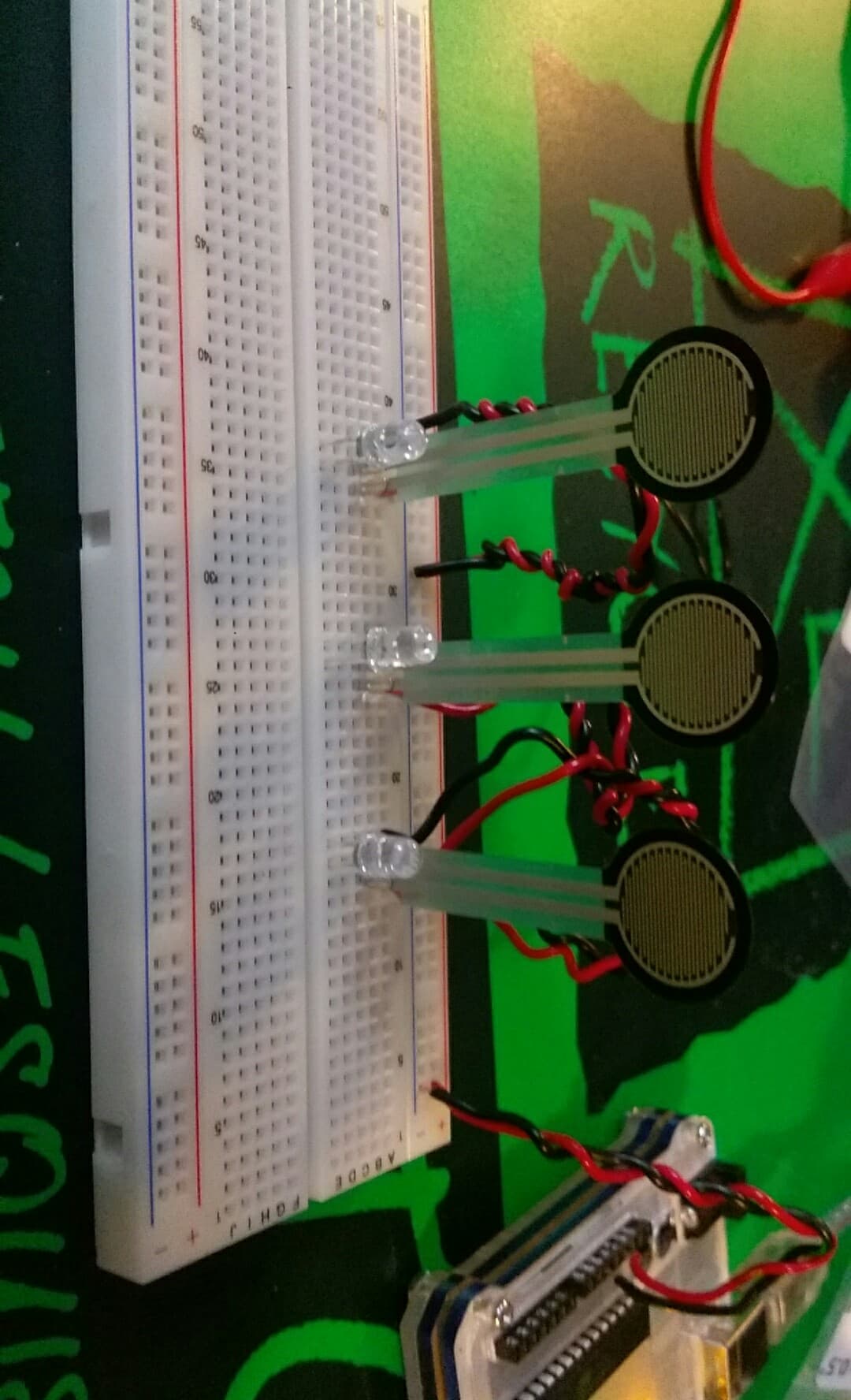
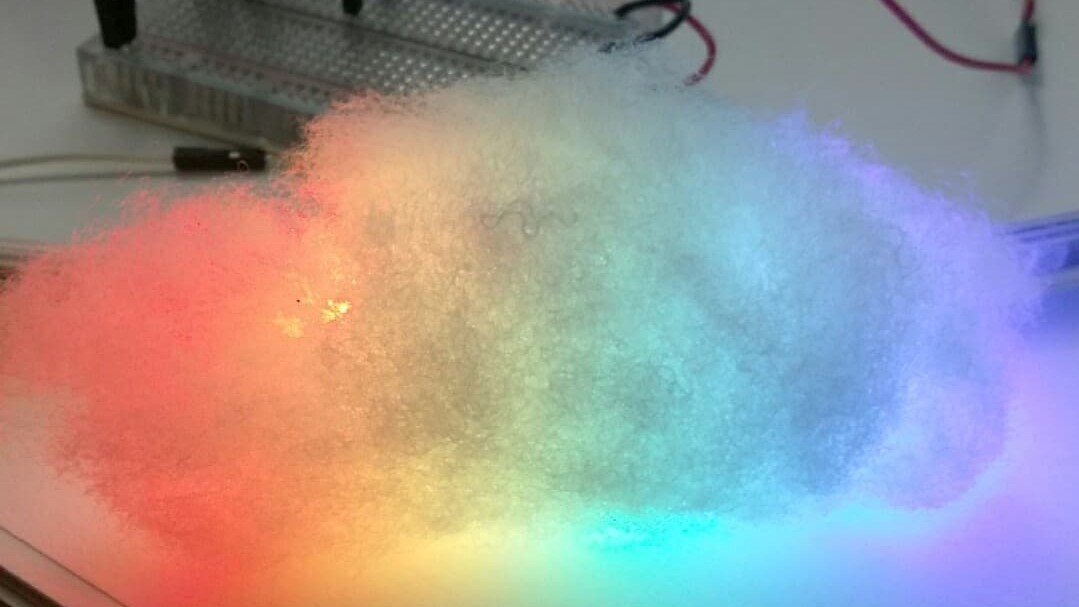
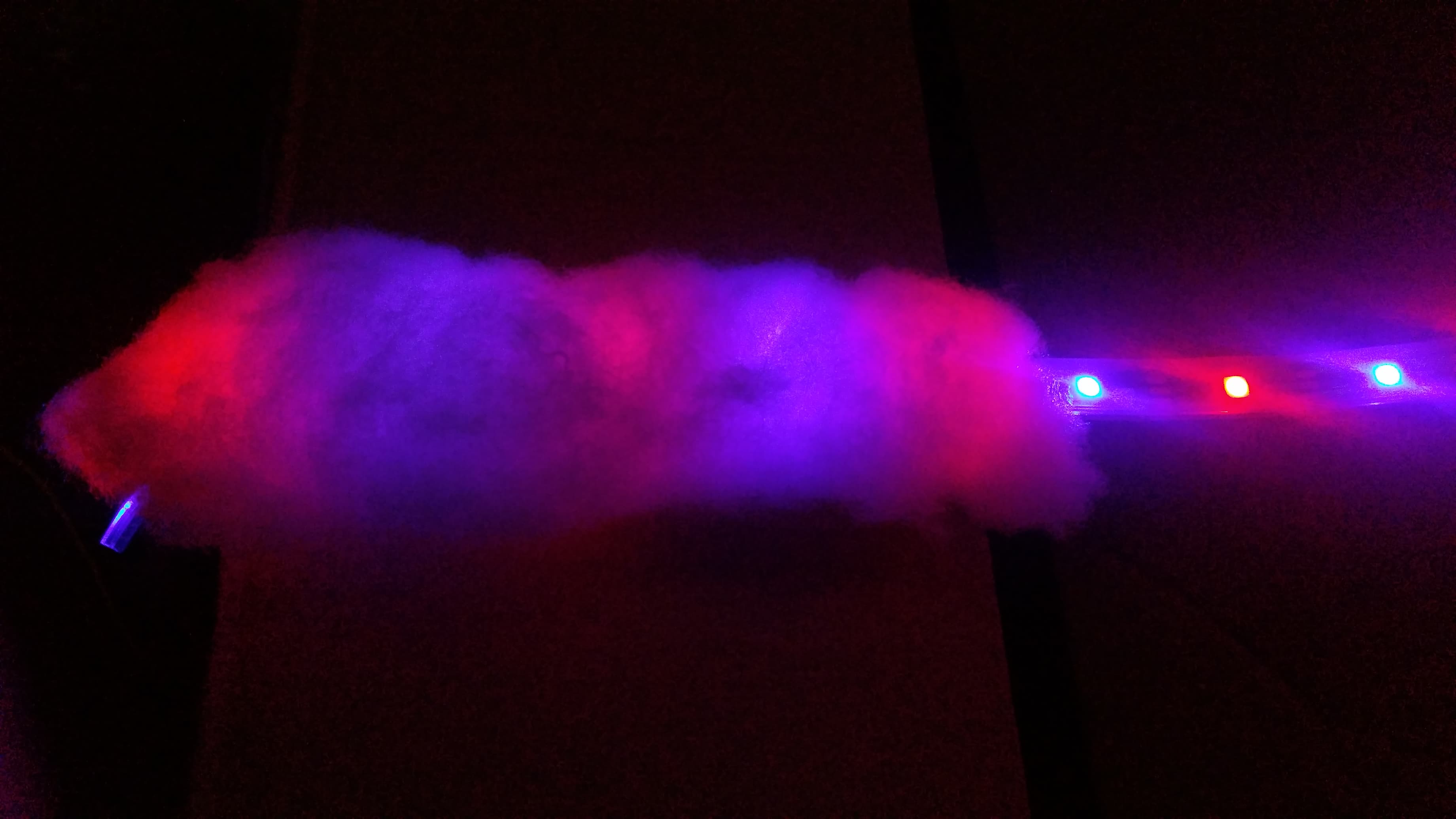
Prototyping
We chose to move forward with the pressure pads as they had shown the most dynamic interactions with the lighting. Combining them with LED light strips and fiberfill material created a beautiful diffusion of light in our prototypes and we instantly knew that was the direction we had to take the installation.
Forms Revisited
Now that we had a technical direction settled, we needed to select the final form the installation would take. The fiberfill we were using provided some inspiration for this with it's cloudly / puffy form and an even diffusion of the LED light.
Fabrication & Assembly
Christina had created a handful of wooden generative forms for a prior project and by assembling them together we created a cloud-like frame. We quickly looped the LEDs through the form to test the lighting and made a few minor adjustments to the layout before layering the fiberfill overtop of the form.
A few hours later we had a cloud form and we began testing and refining our interactions. We attached the pressure sensor to the Arduino and covered the actual sensors themselves in fiberfill to align themselves visually with the installation.